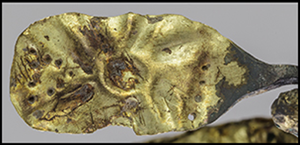Crossref Citations
This article has been cited by the following publications. This list is generated based on data provided by
Crossref.
Garfinkel, Yosef
Hasel, Michael G.
Klingbeil, Martin G.
Kreimerman, Igor
Pytlik, Michael
Carroll, Jon W.
Waybright, Jonathan W.B.
Kang, Hoo-Goo
Choi, Gwanghyun
Chang, SangYeup
Hong, Soonhwa
David, Arlette
Weissbein, Itamar
and
Silverberg, Noam
2021.
The Canaanite and Judean Cities of Lachish, Israel: Preliminary Report of the Fourth Expedition, 2013–2017.
American Journal of Archaeology,
Vol. 125,
Issue. 3,
p.
419.
Kreimerman, Igor
Garfinkel, Yosef
Hasel, Michael G.
and
Shahack-Gross, Ruth
2022.
High-resolution investigation of a conflagration event in the North-East Temple at Lachish via integration of forensic, stratigraphic and geoarchaeological evidence: A model for studying architectural destruction by fire.
Journal of Archaeological Science: Reports,
Vol. 46,
Issue. ,
p.
103705.
Orsingher, Adriano
2023.
Architecture and Afterlife: Small Portable Shrines and Ritual Activities from Tyre to Ibiza.
Journal of Eastern Mediterranean Archaeology and Heritage Studies,
Vol. 11,
Issue. 2-3,
p.
256.
Ebeling, Jennie
and
Mazow, Laura
2024.
A Reconstruction of the Niche in Building 7050 at Hazor.
Near Eastern Archaeology,
Vol. 87,
Issue. 4,
p.
232.
Weissbein, Itamar
and
Garfinkel, Yosef
2025.
Olive Oil Production in the North-East Temple of Canaanite Lachish.
Bulletin of the American Society of Overseas Research,
p.
000.
